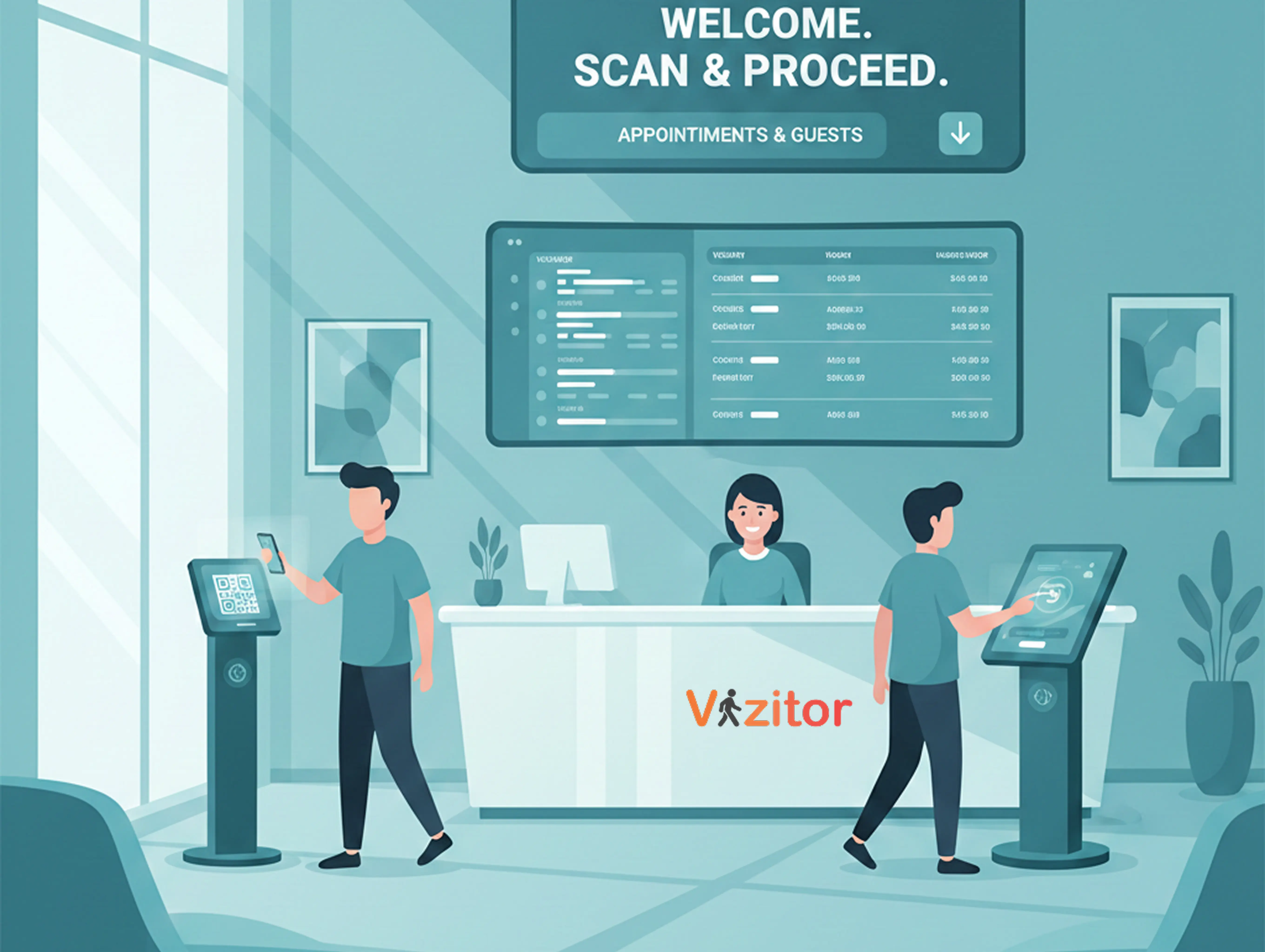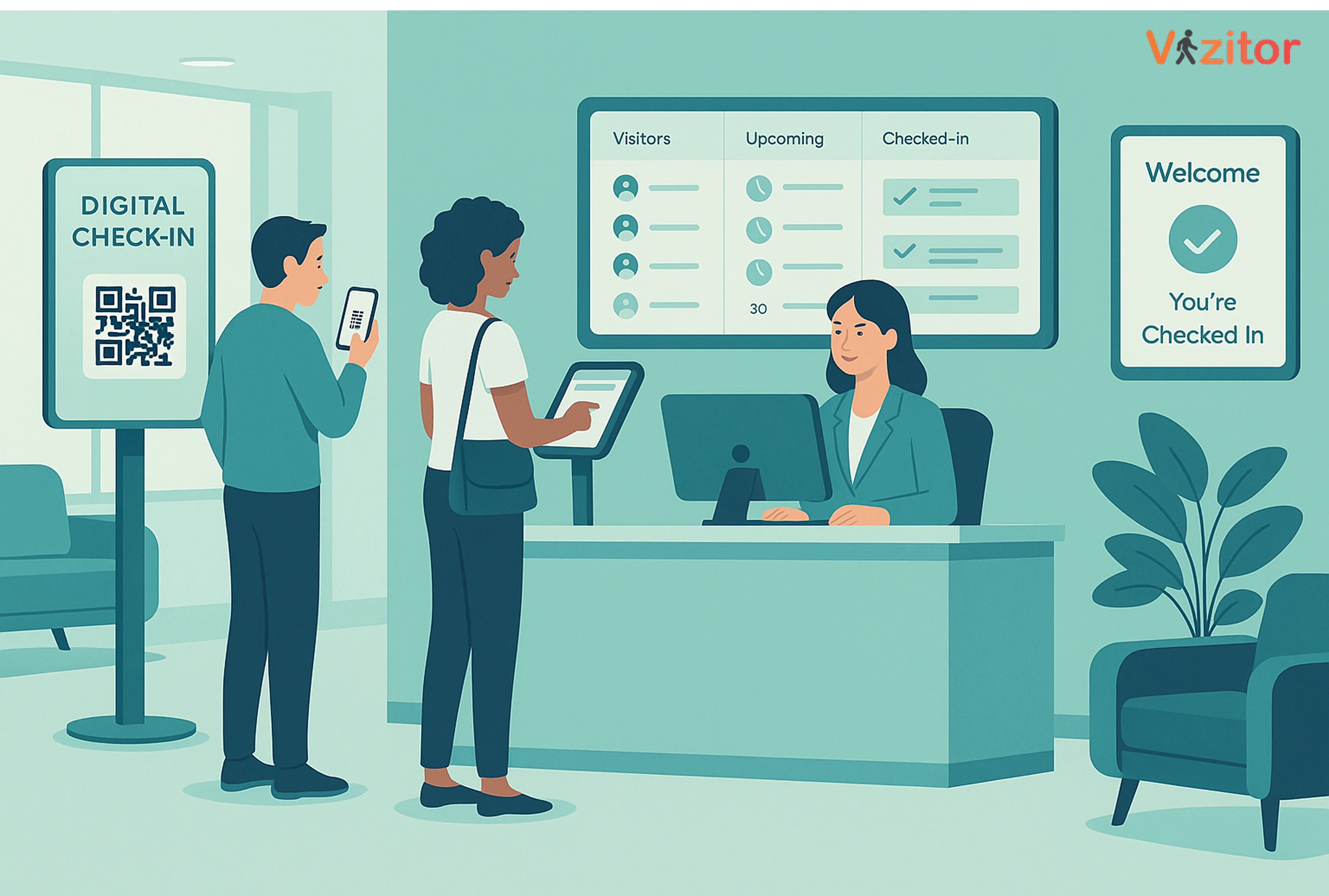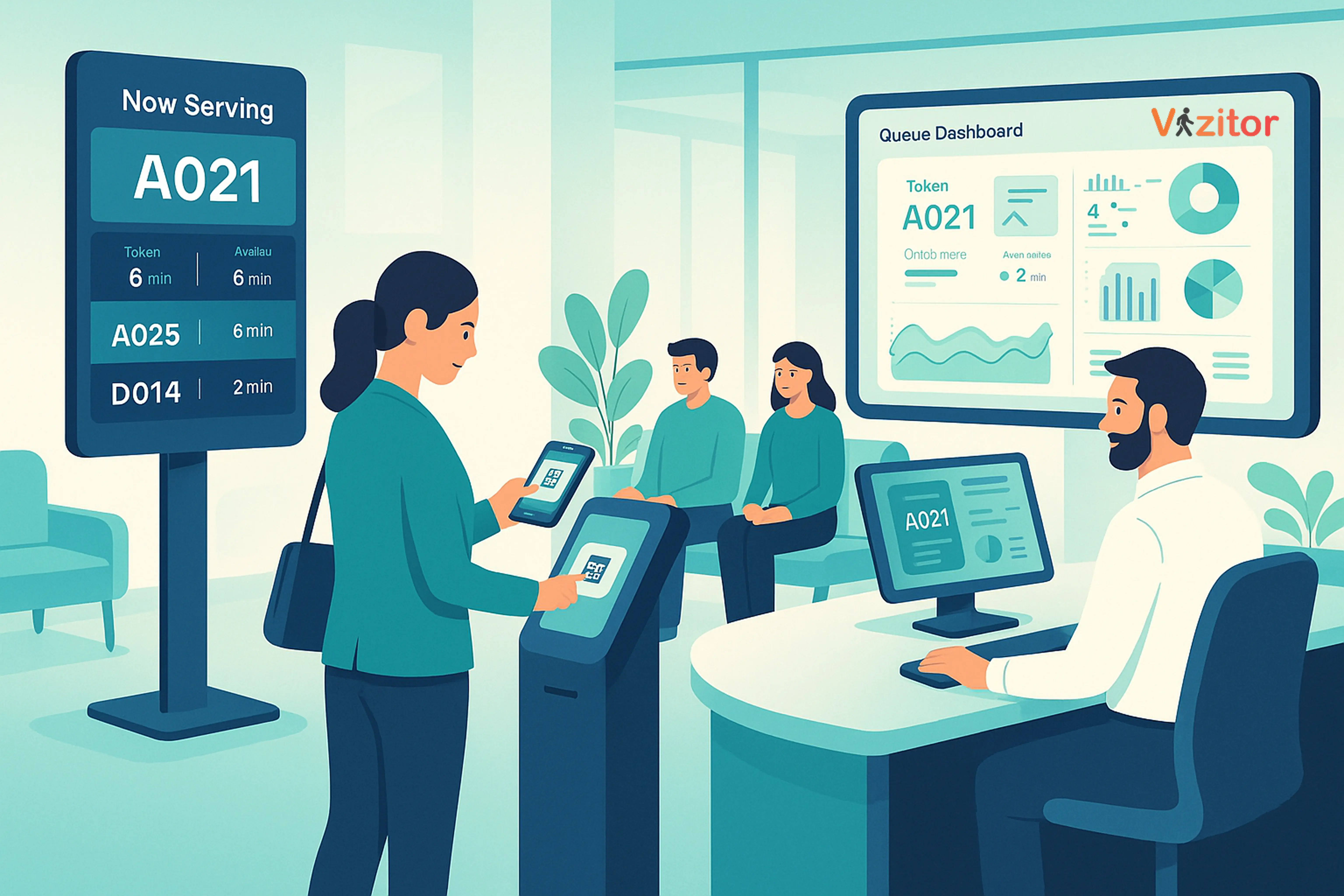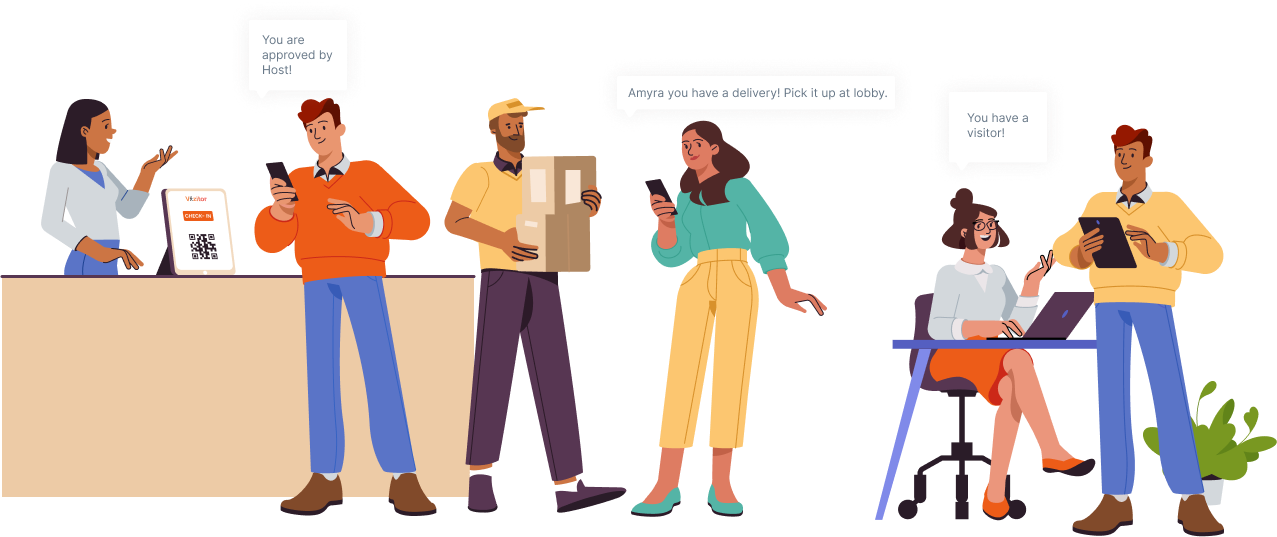Workplace Space Utilization Platforms: Optimize Office Efficiency
In the evolving world of work, office spaces are no longer just locations, they are strategic assets. Companies are embracing workplace space utilization platforms to optimize their office layouts, manage resources efficiently, and improve employee experience. Whether you operate a corporate office, co-working space, or hybrid workplace, these platforms help you track, analyze, and utilize office space smartly, saving costs and boosting productivity.

Table of Content
Try Vizitor for Free!
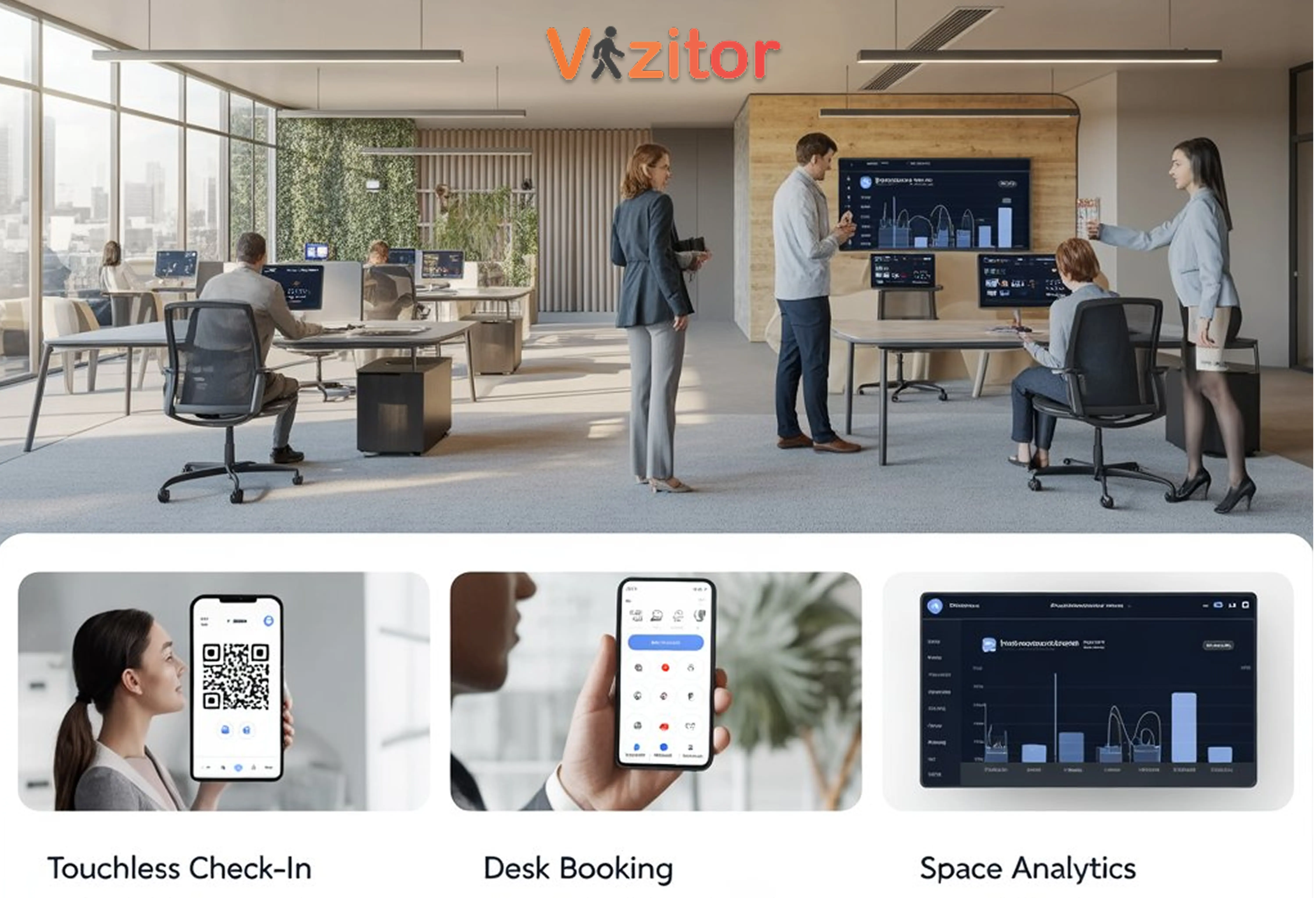
Published on: Tue, May 28, 2024
Last updated: 2025-09-23
Read in 5 minutes
What is a Workplace Space Utilization Platform?
A workplace space utilization platform is a software solution designed to help organizations manage, monitor, and optimize office space usage. These platforms provide real-time insights into workspace occupancy, enable desk and meeting room booking, and track resource utilization to improve efficiency and reduce operational costs.
Modern workplaces rely on these platforms to:
- Support hybrid and flexible work models
- Reduce wasted space and costs
- Improve employee satisfaction
- Ensure workplace safety and compliance
Key features of these platforms include:
- Desk and room booking systems
- Occupancy sensors and analytics
- Visitor management and contactless check-ins
- Integration with other workplace software
Types of Workplace Space Utilization Platforms
Choosing the right platform depends on your organization’s needs. Here are the most common types:
1. Desk Booking Systems
Desk booking software allows employees to reserve workstations in advance, ensuring efficient use of office space. This is especially beneficial in hybrid work environments, where not all employees are present every day.
Benefits include:
- Avoid overcrowding
- Maximize desk utilization
- Improve employee convenience
- Support flexible seating arrangements
2. Meeting Room Booking Systems
A meeting room management system ensures that conference rooms are scheduled efficiently. Features often include:
- Online booking and cancellation
- Real-time availability updates
- Automated reminders
- Analytics on room usage
This reduces scheduling conflicts and increases productivity.
3. Space Planning & Management Software
These platforms help organizations visualize office layouts, allocate spaces efficiently, and manage resources. By leveraging data-driven insights, managers can make informed decisions about office redesigns, desk allocations, and collaborative areas.
4. Occupancy Sensors & Analytics
Smart occupancy sensors track real-time usage of desks, rooms, and common areas. By analyzing this data, organizations can:
- Identify underutilized spaces
- Optimize office layouts
- Reduce energy and maintenance costs
- Enhance employee experience
5. Integrated Workplace Management Systems (IWMS)
IWMS platforms integrate various office management systems into a centralized dashboard. This helps in:
- Resource allocation
- Cost tracking and reporting
- Regulatory compliance
- Streamlined operations across multiple locations
6. Activity-Based Working (ABW) Platforms
ABW platforms enable employees to choose workspaces according to the task at hand collaborative zones, quiet areas, or hot desks. This approach enhances flexibility, boosts collaboration, and improves space utilization.
7. Visitor Management Systems
A touchless visitor management system ensures safe, seamless check-ins while tracking office occupancy and visitor flow. Features include QR code check-ins, automated notifications to hosts, and secure visitor logs.
8. Collaboration & Communication Tools
Digital collaboration platforms help teams coordinate and manage office resources efficiently. By integrating communication tools with space management systems, offices can reduce conflicts and enhance productivity.
Benefits of Workplace Space Utilization Platforms
Implementing a workplace space utilization platform provides a wide range of benefits for both employees and management:
1. Enhanced Operational Efficiency
Data-driven insights enable organizations to optimize layouts, allocate resources effectively, and reduce wasted space. This improves overall productivity and workflow.
2. Cost Savings
By identifying underutilized areas and automating space management, organizations can reduce real estate and maintenance costs, saving significant capital.
3. Improved Employee Experience
Platforms that support flexible desk booking, collaborative spaces, and touchless check-ins make the workplace more comfortable, flexible, and engaging.
4. Better Security & Compliance
With digital visitor management, occupancy tracking, and automated access controls, organizations can maintain security, track visitors, and comply with health and safety regulations.
5. Sustainability
Reducing unused space, minimizing paper use, and optimizing energy consumption contributes to eco-friendly office practices.
How to Choose the Right Platform
Selecting the ideal platform depends on:
- Organization Size & Needs: Consider office layout, number of employees, and hybrid work patterns.
- Integration Capabilities: Ensure compatibility with existing software like HR or calendar systems.
- User-Friendliness: The platform should be easy for employees and management to use.
- Analytics & Reporting: Look for platforms offering actionable insights on space utilization.
- Scalability: The system should grow with your organization and adapt to hybrid work trends.
How Vizitor Helps Optimize Workplace Space
Vizitor offers a complete workplace space utilization solution, including:
- Touchless visitor management for safe check-ins
- Desk and meeting room booking systems to optimize office resources
- Real-time analytics and reporting for informed decision-making
- Seamless integration with your existing systems
By implementing Vizitor, organizations can improve efficiency, reduce operational costs, and enhance employee experience, all while maintaining a safe, modern office environment.
FAQs
Q1: What is a workplace space utilization platform?
A workplace space utilization platform is software that helps organizations monitor, manage, and optimize office space. It includes desk and room booking, visitor management, and analytics, improving efficiency, cost savings, and employee experience.
Q2: How does desk booking software improve office efficiency?
Desk booking software allows employees to reserve workstations in advance, preventing overcrowding and ensuring optimal space utilization. It supports hybrid work models, improving productivity and employee satisfaction.
Q3: Can visitor management systems be part of space utilization?
Yes, Touchless visitor management systems track office occupancy, ensure safety, and provide analytics for space planning, making them an essential part of modern space utilization platforms.
Q4: What are the benefits of occupancy sensors?
Occupancy sensors track real-time usage of desks, rooms, and common areas. They provide data-driven insights to optimize space, reduce energy costs, and enhance employee comfort.
Q5: How do I choose the best space utilization platform?
Evaluate office size, workflow needs, integration capabilities, and scalability. Look for platforms offering desk booking, visitor management, analytics, and touchless technology for maximum efficiency.
Q6: Can small businesses benefit from space utilization platforms?
Absolutely. Even small offices can improve efficiency, save costs, and provide a modern, flexible workspace using desk booking, visitor management, and analytics platforms.
Conclusion
In today’s hybrid work environment, a workplace space utilization platform is essential for any modern office. From desk and meeting room booking systems to touchless visitor management, these platforms help organizations maximize efficiency, reduce costs, and improve employee satisfaction.
By implementing Vizitor’s comprehensive solutions, your office can become smarter, safer, and more productive, ready for the future of work.
Transform your office today!
Discover how Vizitor’s workplace space utilization platforms can optimize your office, enhance safety, and boost productivity.
Get Started with Vizitor: Contact Us





